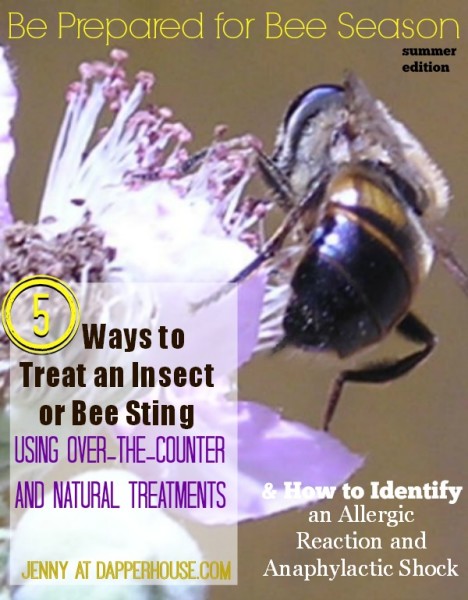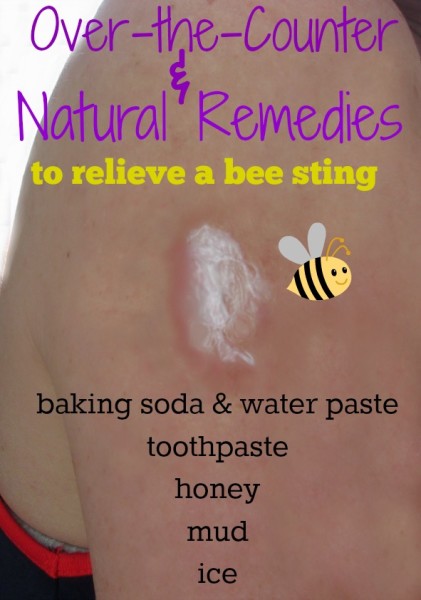Summer and warmer weather brings on the bees. We have learned to live side by side with them because they are necessary to our lives and vital to our ecosystem, but we still have to be a little cautious and a lot prepared. Bees, wasps and other insects can sting people and pets. The range of side effects could be as harmless as a little pain or as dangerous as anaphylactic shock. Here are some tips on what you can do to be safe this summer in case of a bee and/ or insect sting.

1.) The first line of defense in a stinging incident is to Stay Calm! Bee stings can be painful, frightening and surprising. The person affected needs to hear a confident and relaxing voice to help them stay composed. Assessing breathing is the number one concern for identifying and allergy so initiating calm, easy breaths are critical.
2.) If a person knows that they are allergic to stings, do not wait for symptoms to develop and call 911 immediately. Do not wait for symptoms to appear before calling. Unfortunately, people do not always know if they are allergic to bees or insect stings. Watch for these signs to determine if you need to seek emergency help for a potentially life threatening anaphylactic reaction.
- difficulty breathing or speaking (for any reason)
- tightness or swelling in throat, chest, mouth
- hives – swelling, burning, itching and/ or rash on any part of the body
- lowered blood pressure – dizzy faint, blurred vision
- anxiety, rapid heartbeat, racing pulse
TIP: If you are uncertain whether or not a person may need help then always call 911 and let them decide.
3.) Once the person is more relaxed, it is important to remove the stinger! You can slide it out of the skin using the edge of a credit card or fingernail. You can pull it out using fingernails or tweezers. At the top of the stinger there is a bulb or sac that holds the venom. Avoid pushing down on this part of the stinger so it does not get into the body.
4.) Once the stinger is removed it is good to do any of the following treatments:
Over the counter remedies that work:
- Use calamine or other allergy lotions to help with pain and itching.
- Take acetaminophen (Tylenol) for pain.
- Take antihistamine (Benadryl) for itching and allergic reaction.
Natural solutions that I have tried and recommend:
- To help with both the pain and swelling, apply cold or ice pack. Ice the area off and on at whatever intervals are tolerable. Leave on no more than 15 – 20 minutes at one time.
- Apply a paste to the site of the sting made of baking soda and water or use toothpaste. Clean mud can work as well. This neutralizes acid and reduces swelling and pain.

5.) Keep the area clean so that it does not get infected. If itching and scratching are an issue, then cover the wound with a dry bandage so that it can be undisturbed. Use a tiny bit of over-the-counter antibiotic cream if needed. Natural remedies would include honey, tea tree oil and lemon.
Have you or anyone you know experienced a bee sting?
If so what happened?
How did you handle and treat the situation?

Liz
Great to know!